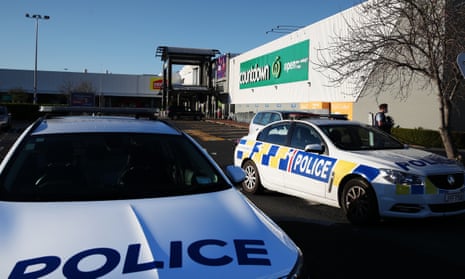On 3 September, seven innocent people were injured at a suburban Auckland supermarket. The perpetrator, Ahamed Aathill Mohamed Samsudeen, was shot and killed by police.
In the aftermath of this heartbreaking event, we ask whether it could have been avoided. For those of us who had been trying to support Samsudeen in his transition out of New Zealand’s correctional system, this event raises several important questions.
Samsudeen became a person of national security interest in 2016 after posting extreme materials and troubling statements on Facebook. Initially voicing concerns about the persecution of Muslims, his posts shifted towards supporting terrorist groups like Islamic State. He was prosecuted for distributing these materials on the basis that they were objectionable publications.
Following this, after several years in isolation, Samsudeen was eventually sentenced last month to one year of supervision for possessing two items of IS propaganda that promoted terrorism. Despite the crown having previously sought a charge under the Terrorism Suppression Act, the application was declined after the high court ruled that Samsudeen’s actions fell short of offences under that legislation.
During Samsudeen’s trial in 2018, his legal team and I offered to run a bespoke, community-led intervention program to support Samsudeen in his transition out of prison, with one of its aims to alter his extreme views. The program, which has been successfully applied in the past with Muslim youth transiting out of prison, was accepted by the crown as the best and most appropriate way forward. Nonetheless, the police opted for a different approach to the crown, instead choosing surveillance and monitoring over rehabilitation.
Samsudeen, a Sri Lankan national who arrived in New Zealand in 2011, had had a troublesome upbringing and was struggling with depression and other significant mental health issues. These were exacerbated by his early experiences of persecution, kidnapping and torture in Sri Lanka, being labelled a terrorist and held in solitary confinement with no professional support. Marginalised, seeking meaning in his life and acceptance in the New Zealand community, Samsudeen’s situation is not uncommon among young refugees becoming entangled in the criminal justice system.
When Samsudeen was examined in 2018 to determine his suitability for rehabilitation upon release, he did not fit the usual characteristics of a radicalised offender. At the time, he had no political agenda against the New Zealand government or any other western countries. Although he was vocal about inequality, discrimination and other grievances, he was not motivated to use violence, nor did he want to hurt others.
From my experience working with hard-to-reach Muslim communities, it is common for young Muslim men who feel marginalised or ostracised from the general community to voice frustrations on social media platforms about cultural and religious discrimination, and about the general oppression of Muslims. In most cases, they are unaware that their commentary is offensive. The social media postings become a way of voicing frustrations rather than inciting violence or supporting the use of violence. In most cases, there is no intention of acting out.
Instead of radicalisation, Samsudeen showed clear signs of depression and post-traumatic stress. In his mental health assessments, Samsudeen showed signs that he was experiencing post-traumatic stress, such as unwanted memories of the past, irritability and outbursts of anger, isolation and avoiding people, and places or situations reminiscent of his trauma. He felt disconnected, had difficulty trusting people, was unable to rest and sleep and was constantly on edge. His long-term absence from family and community intensified his symptoms of PTSD.
My advice to the courts at the time was that his trauma needed to be urgently addressed to prevent further psychological and physical damage. Left untreated, he would continue to feel alone and struggle with recurring feelings of anxiety, fear and worthlessness.
I acknowledge that police surveillance and monitoring are key components in community safety and national security. But they do not result in rehabilitation. In fact, they could arguably encourage reoffending. Our alternative approach was to put Samsudeen through a support and reintegration program led by representatives from the Auckland Muslim community. Efforts were made to engage New Zealand police as a collaborative partner in this program. Unfortunately, our efforts were ignored.
It was my strong recommendation to the courts that addressing Samsudeen’s original trauma should be one of the key goals in his rehabilitation, whether in the community or prison. Further, I recommended that addressing his mental issues would be a critical factor for successful reintegration back into the community. I suggested that this, coupled with building his religious knowledge through education, would also be vital.
As it was, law enforcement treated him exclusively as a violent extremist, with no apparent efforts to address his mental health issues. His experience with New Zealand police and the criminal justice system could have triggered his recurring experience of the original trauma, alleging mistreatment or excessive use of force during his time in the NZ criminal justice system.
The tragedy of 3 September shows that traditional law enforcement strategies to address extremism are not the only solution. We must urgently consider and try alternative approaches that seek to address causal factors. As we look ahead, the question must be: could we have prevented this tragedy?
Dr Clarke Jones is a senior research fellow and criminologist based at the Research School of Psychology at the Australian National University. His expertise includes youth interventions, radicalisation, correctional reform, terrorist offenders and prison gangs
